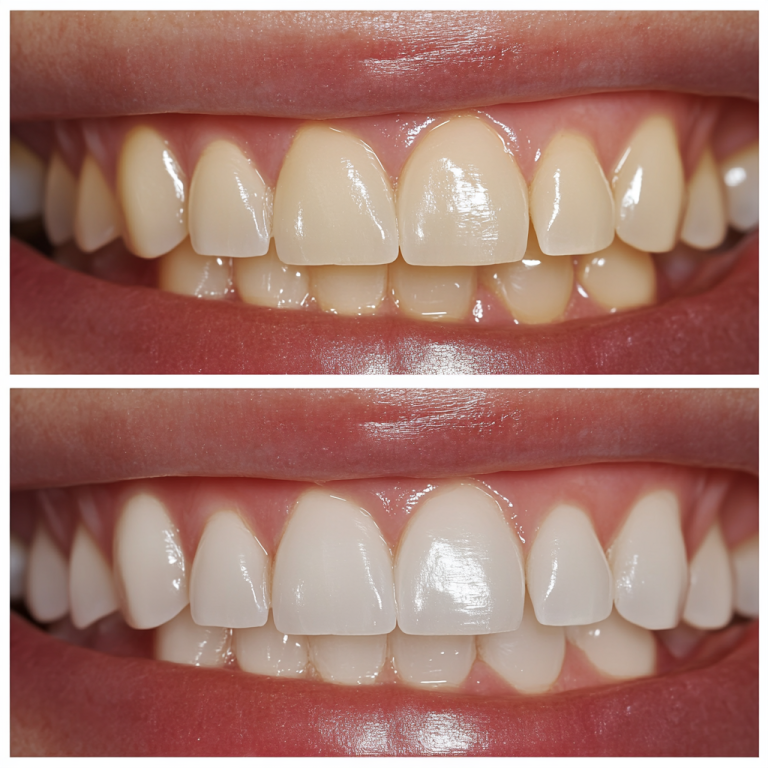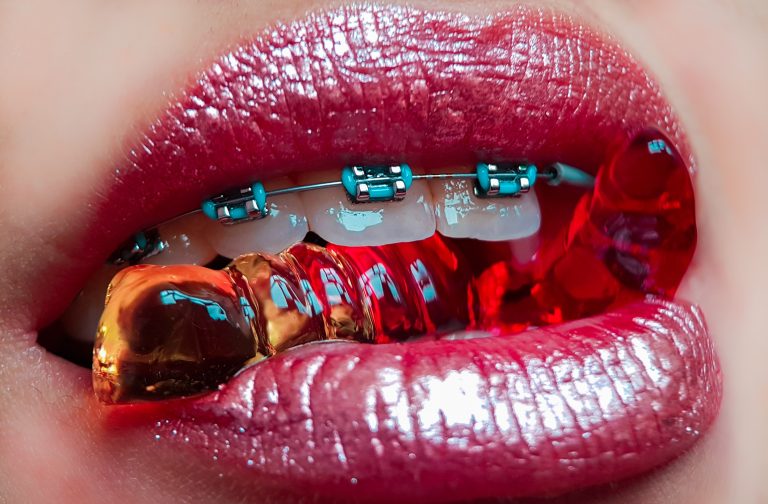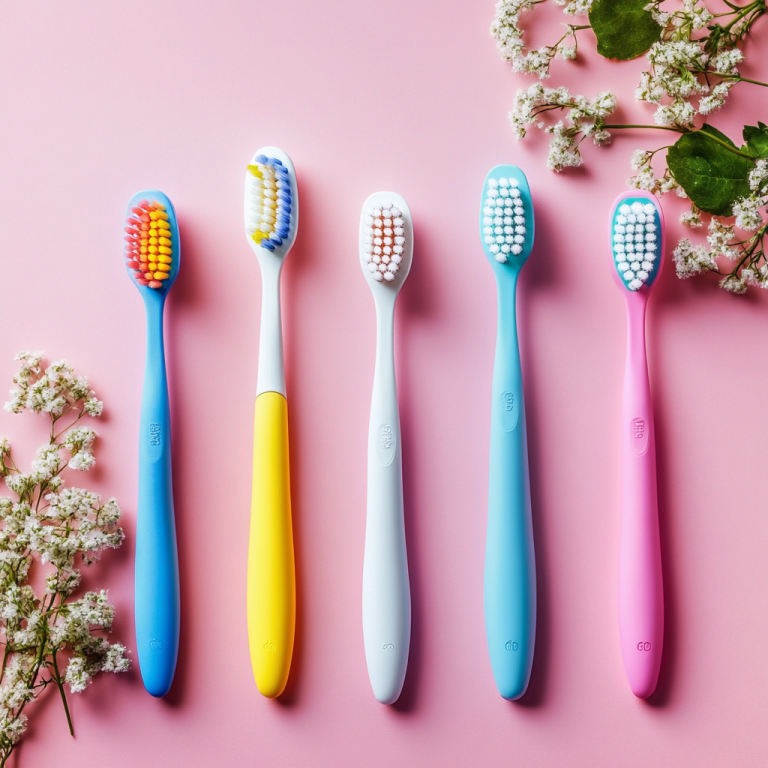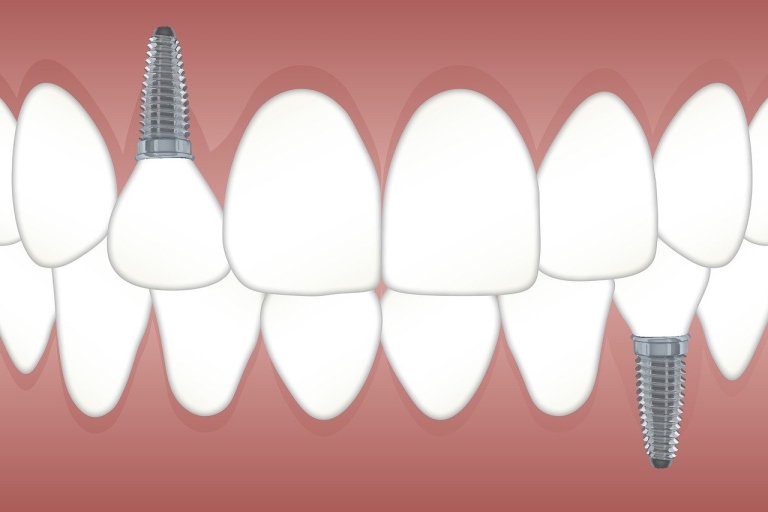Electric toothbrushes: can they be used with braces? Yes! In fact, they offer better results than manual ones. Oscillating bristles help remove plaque from brackets and wires. Plus, special brush heads make it easier to clean hard-to-reach areas. Timers and pressure sensors can help you brush for two minutes without too much force. But, not all electric toothbrushes are suitable for use with braces. Check the manufacturer’s recommendations or ask your orthodontist before buying one.
According to a study, electric toothbrushes reduce plaque levels around brackets compared to manual brushing. An electric toothbrush is a great addition to your oral care routine during orthodontic treatment.

Benefits of Using an Electric Toothbrush with Braces
Using an electric toothbrush with braces has multiple advantages.
-
Firstly, it provides a comprehensive and effective clean, reaching areas hard to reach with a manual toothbrush.
-
Secondly, the oscillating motion of the bristles helps remove plaque and food particles more effectively.
-
Additionally, electric toothbrushes often come with pressure sensors to make sure you don’t brush too hard and damage your braces.
-
Plus, some offer specialized brush heads designed especially for braces, offering extra care and comfort.
Electric toothbrushes also lower the risk of gum disease and tooth decay. The precise cleaning action makes sure no areas are missed during your brushing routine. This is especially important when wearing braces, as they can trap food particles and make oral hygiene more challenging.
It’s important to note that while using an electric toothbrush with braces is recommended, it doesn’t replace regular dental check-ups and professional cleanings. Your orthodontist still needs to adjust your braces and track their progress.
The American Journal of Orthodontics and Dentofacial Orthopedics conducted a study which found that patients who used an electric toothbrush experienced significantly better oral hygiene compared to those who used a manual toothbrush only.
Therefore, if you have braces, investing in an electric toothbrush can greatly improve your oral hygiene routine and help you achieve a healthier smile. Don’t forget to consult with your orthodontist or dentist for more tips regarding the use of an electric toothbrush during your orthodontic treatment.
Step-by-Step Guide on Using an Electric Toothbrush with Braces
To ensure that you effectively use an electric toothbrush with braces, follow this step-by-step guide. Choose the right electric toothbrush, master the proper brushing technique, and learn how to clean and maintain your electric toothbrush. This guide will provide you with the solution to seamlessly incorporate an electric toothbrush into your oral care routine while wearing braces.
Choosing the Right Electric Toothbrush
Choosing the right electric toothbrush can make a big difference when you have braces. Here’s how to pick the one that’s just right for you:
- Opt for soft bristles to avoid damage to your braces or gums.
- Look for a toothbrush with multiple brushing modes, like sensitive or gum care, to suit your specific needs.
- Think about getting a toothbrush with a timer to make sure you brush for the prescribed two minutes.
- An electric toothbrush with a pressure sensor can prevent too much force on your braces and teeth, reducing the risk of harm.
- Additionally, pick a toothbrush with a small brush head to make it easier to get around brackets and wires.
- Don’t forget to change the brush head regularly to make sure you get the best cleaning.
Follow these tips to ensure good oral hygiene throughout your orthodontic treatment. Pro Tip: Ask your orthodontist or dentist before buying an electric toothbrush for personal advice based on your dental needs.
Proper Brushing Technique
Electric toothbrushes have been around since the 1950s, when Dr. Philippe-Guy Woog created an oscillating brush for gum massage therapy. Since then, many improvements have been made, including toothbrushes specially designed for those with braces. These toothbrushes are popular for their convenience and effectiveness in maintaining oral hygiene.
To make sure you’re using your electric toothbrush correctly with braces, follow these steps:
- Hold it at a 45-degree angle to your gumline.
- Move it in gentle circular motions, focusing on one or two teeth at a time.
- Spend at least two minutes brushing.
For extra care, use interdental brushes or floss threaders to clean between spaces created by braces. Rinse your mouth with an antibacterial mouthwash afterwards.
Cleaning and Maintaining your Electric Toothbrush
Cleanliness and maintenance of your electric toothbrush is key for optimal oral hygiene. Follow these 5 simple steps to keep your toothbrush in perfect condition:
- Rinse after each use. After brushing, make sure to rinse the bristles thoroughly to remove any leftover toothpaste or debris. This helps avoid bacterial growth and keeps the brush hygienic.
- Clean the handle. Wipe the handle of the toothbrush with a damp cloth or antibacterial wipe frequently to remove any dirt or grime buildup. This guarantees a hygienic brushing experience.
- Replace the brush head regularly. It is recommended to replace your brush head every three months or earlier if the bristles become frayed. This maintains effective cleaning and stops bacteria buildup.
- Store it properly. Store your electric toothbrush upright in a clean, dry area to let it air dry completely between uses. This prevents moisture-related problems and increases the lifespan of your toothbrush.
- Maintain charging habits. Follow the instructions given by the manufacturer for charging your electric toothbrush and avoid overcharging it. Properly handling the battery ensures optimal performance and longevity.
Also, pay attention to special details like checking if your toothbrush is compatible with sterilizing solutions or replacing damaged chargers immediately.
These tips will help you maintain a clean and functional electric toothbrush, resulting in better oral health. Rinsing after every use stops bacteria from multiplying on your brush head, avoiding potential oral health risks. Cleaning the handle gets rid of any bacteria that may have gathered during brushing sessions, preventing cross-contamination while using it next time. Replacing brush heads regularly maintains good oral hygiene as worn-out bristles are less efficient at cleaning teeth and gums properly. Storing it properly minimizes exposure to moisture, which can cause mold growth and other problems affecting its functionality. Lastly, following proper charging habits not only keeps your toothbrush working optimally but also prevents any potential damage caused by extended charging periods.
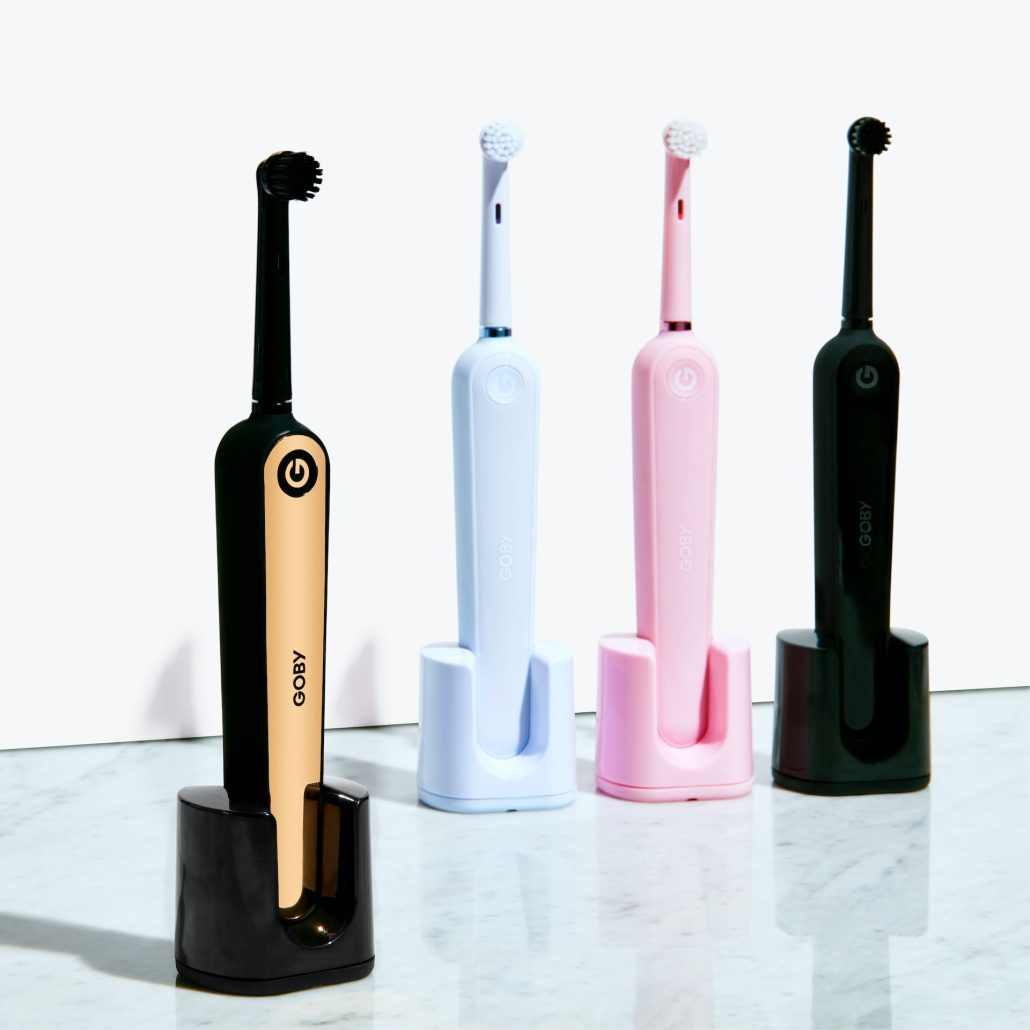
Tips and Precautions for Using an Electric Toothbrush with Braces
To ensure effective and safe oral care while wearing braces, follow these tips and precautions when using an electric toothbrush. Adjusting brushing pressure, using interdental brushes or floss, and visiting your orthodontist regularly are essential considerations. Maintain your dental hygiene and keep your braces in optimal condition with these guidelines.
Adjusting Brushing Pressure
The pressure used while brushing with an electric toothbrush is key, especially when you have braces! Here’s a guide to help you get it right:
| Step | Description |
|---|---|
| 1 | Start gently: Light pressure on your teeth and braces works best – too much can harm the brackets and wires, giving you pain and slowing down your orthodontic treatment. |
| 2 | Angle counts: Hold the electric toothbrush at a 45-degree angle against your teeth and gums. This allows the bristles to get beneath the wires and clean around the brackets properly. |
| 3 | Let the brush work: You don’t need to use too much force while brushing. The bristles are designed to do most of it for you. Guide the brush along all surfaces of your teeth, including those around your braces. |
| 4 | Check regularly: Look for any signs of wear or damage on your electric toothbrush and braces. Use new brush heads as recommended by the manufacturer for effective cleaning. |
Also, remember to talk to your orthodontist for advice on adjusting brushing pressure during your treatment.
My friend Sarah recently got braces and used an electric toothbrush. She put too much pressure on her teeth, leading to gum soreness and damage to her brackets. Thankfully, she got help and changed her technique with her orthodontist’s help.
Look after your dental hygiene during orthodontic treatment! Use these tips for a successful journey and a healthier smile!
Using Interdental Brushes or Floss
Interdental brushes and floss are essential for optimal oral hygiene when wearing braces. Here are a few key points:
- Choose the correct tool: Select interdental brushes or floss created for braces. These tools are slim, allowing them to reach tight spaces between teeth and brackets.
- Apply the right technique: Carefully slide the brush or floss between your teeth, making sure to clean both sides of the wire and bracket. Don’t use too much pressure as it can damage your braces.
- Be consistent: Make it a habit to use interdental brushes or floss every day. This will help remove plaque and food particles that may get stuck in hard-to-reach spots.
Also, some orthodontists suggest using orthodontic wax prior to interdental brushes or floss. This provides extra protection for your gums and reduces any discomfort from the wires.
Pro Tip: Invest in a water flosser, as it effectively removes debris around braces while being gentle on your gums.
Visiting your Orthodontist Regularly
It is essential to visit your Orthodontist regularly. This allows them to monitor your treatment and make necessary adjustments. They can also spot any problems/complications and offer timely solutions. Plus, these visits help keep track of oral hygiene and ensure your braces are clean and in good condition. Your Orthodontist can also provide guidance on how to handle discomfort or pain associated with wearing braces.
In addition, regular check-ups can prevent problems that may delay the treatment or affect the final outcome. Investing in these appointments is key to a successful orthodontic journey. A recent study showed that patients who followed their Orthodontist’s schedule experienced faster results compared to those who missed their appointments. This confirms the importance of staying committed to check-ups and following your Orthodontist’s recommendations.
Conclusion
It is possible to use an electric toothbrush with braces. Caution and certain guidelines must be followed for proper care. Consider selecting an electric toothbrush designed for individuals with braces. These may have special features such as sensitive modes or orthodontic brush heads that can clean around brackets and wires without harm.
Navigate the brush head carefully around brackets and wires, cleaning all areas of the teeth and gums. Pay extra attention to the gumline and between braces where food particles accumulate.
Using a water flosser alongside an electric toothbrush can provide a thorough clean. Water flossers help remove plaque and debris from hard-to-reach spots, as well as massaging the gums for better oral health.
Incorporating fluoride mouthwash into your routine can offer more protection against decay. Rinse your mouth with mouthwash after brushing, to reach areas the toothbrush may have missed.
Using an electric toothbrush with braces can enhance oral hygiene by removing plaque and maintaining healthy gums. Following these suggestions and using proper technique can ensure optimal dental care during orthodontic treatment.
Frequently Asked Questions
1. Can I use an electric toothbrush with braces?
Yes, you can use an electric toothbrush with braces. In fact, it is recommended as it can provide a more thorough cleaning compared to manual brushing.
2. Are there any specific electric toothbrush models designed for people with braces?
Yes, there are electric toothbrush models specifically designed for individuals with braces. These toothbrushes often have special features such as orthodontic brush heads or pressure sensors to ensure gentle and effective cleaning.
3. How should I brush my teeth with an electric toothbrush if I have braces?
When using an electric toothbrush with braces, it is important to brush gently and thoroughly. Start by placing the brush head at a 45-degree angle against the gum line, then gently move it in a circular motion around each tooth and brace. Be sure to spend enough time cleaning all surfaces of your teeth and braces.
4. Can an electric toothbrush damage my braces?
No, when used correctly, an electric toothbrush should not damage your braces. However, it is important to follow the recommended brushing technique and avoid applying excessive pressure. If you are unsure, it is always recommended to consult with your orthodontist.
5. How often should I replace the brush head on my electric toothbrush when I have braces?
It is recommended to replace the brush head on your electric toothbrush every three months or sooner if the bristles become frayed. With braces, it is common for the bristles to wear out more quickly, so regular replacement is important to maintain effective cleaning.
6. Can I use other accessories, such as interdental brushes or flossers, along with my electric toothbrush when I have braces?
Absolutely! While an electric toothbrush can provide thorough cleaning, it is still beneficial to use additional accessories like interdental brushes or flossers to clean between the braces and reach areas that may be difficult to access with a toothbrush alone.
